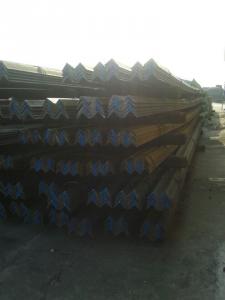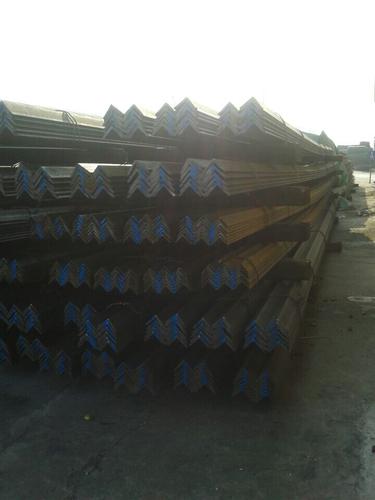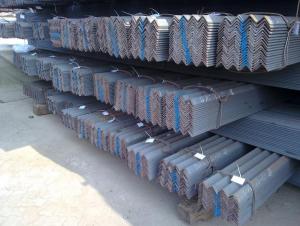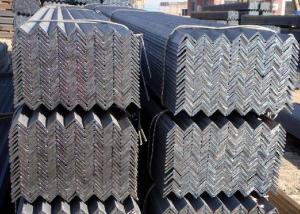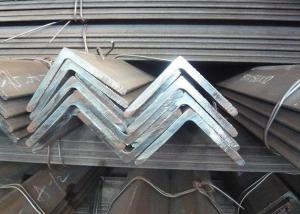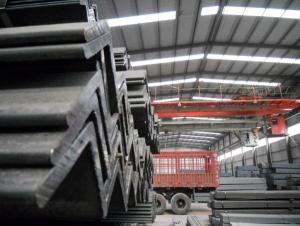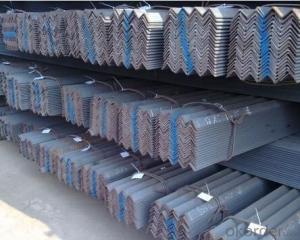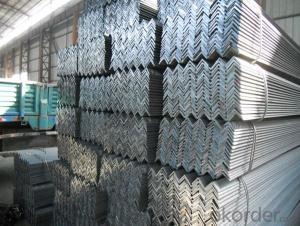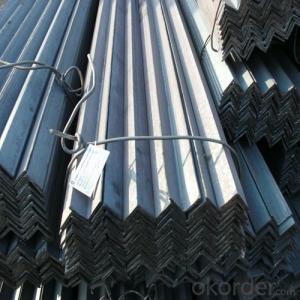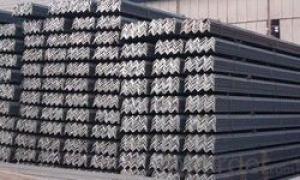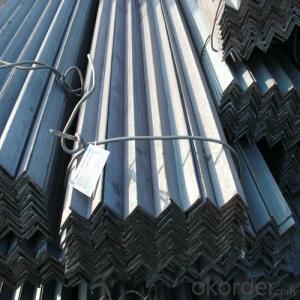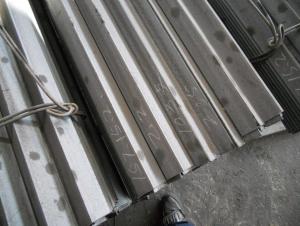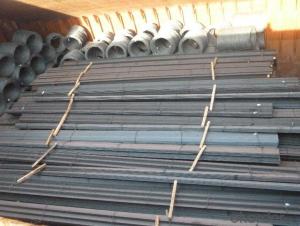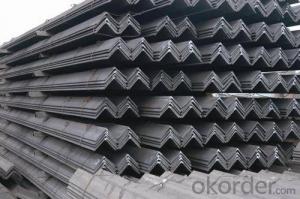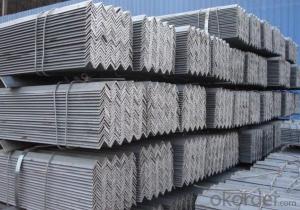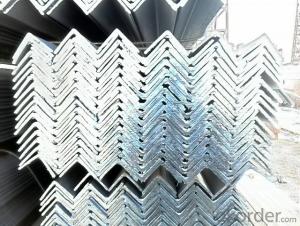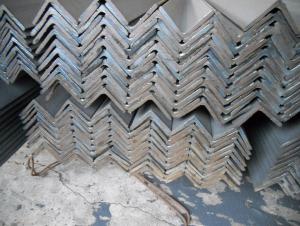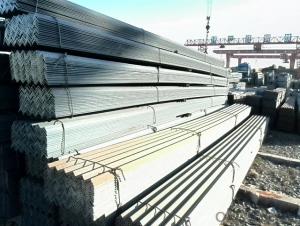Hot Rolled Carbon Equal and Unequal Steel Angle
- Loading Port:
- China Main Port
- Payment Terms:
- TT or LC
- Min Order Qty:
- 100 m.t.
- Supply Capability:
- 5000MT m.t./month
OKorder Service Pledge
OKorder Financial Service
You Might Also Like
Product Description:
OKorder is offering Hot Rolled Carbon Equal and Unequal Steel Angle at great prices with worldwide shipping. Our supplier is a world-class manufacturer of steel, with our products utilized the world over. OKorder annually supplies products to African, South American and Asian markets. We provide quotations within 24 hours of receiving an inquiry and guarantee competitive prices.
Product Applications:
Hot Rolled Carbon Equal and Unequal Steel Angle are ideal for structural applications and are used in the construction of buildings and bridges, and the manufacturing, petrochemical, and transportation industries..
Product Advantages:
OKorder's Hot Rolled Carbon Equal and Unequal Steel Angle are durable, strong, and wide variety of sizes.
Main Product Features:
· Premium quality
· Prompt delivery & seaworthy packing (30 days after receiving deposit)
· Can be recycled and reused
· Mill test certification
· Professional Service
· Competitive pricing
Product Specifications:
Manufacture: Hot rolled
Grade: Q195 – 235
Certificates: ISO, SGS, BV, CIQ
Length: 6m,12m, as per customer request
Packaging: Export packing, nude packing, bundled
EQUAL ANGLES SIZES |
| ||
a(mm) | a1(mm) | thickness(mm) | length |
25 | 25 | 2.5---3.0 | 6M/12M |
30 | 30 | 2.5---4.0 | 6M/12M |
38 | 38 | 2.5 | 6M/12M |
38 | 38 | 3.0---5.0 | 6M/12M |
40 | 40 | 3.0---6.0 | 6M/12M |
50 | 50 | 3 | 6M/12M |
50 | 50 | 3.7---6.0 | 6M/9M/12M |
60 | 60 | 5.0---6.0 | 6M/9M/12M |
63 | 63 | 6.0---8.0 | 6M/9M/12M |
65 | 65 | 5.0---8.0 | 6M/9M/12M |
70 | 70 | 6.0---7.0 | 6M/9M/12M |
75 | 75 | 5.0---10.0 | 6M/9M/12M |
80 | 80 | 6.0---10.0 | 6M/9M/12M |
90 | 90 | 6.0---10.0 | 6M/9M/12M |
100 | 100 | 6.0---12.0 | 6M/9M/12M |
120 | 120 | 8.0-12.0 | 6M/9M/12M |
125 | 125 | 8.0---12.0 | 6M/9M/12M |
130 | 130 | 9.0-12.0 | 6M/9M/12M |
140 | 140 | 10.0-16.0 | 6M/9M/12M |
150 | 150 | 10---15 | 6M/9M/12M |
160 | 160 | 10---16 | 6M/9M/12M |
180 | 180 | 12---18 | 6M/9M/12M |
200 | 200 | 14---20 | 6M/9M/12M |
FAQ:
Q1: what is the difference between actual weight and theoretical weight?
A1: All the section steel has two weights: actual weight and theoretical weight. Actual weight is the weighing out when the product delivered from the mill. Theoretical weight is calculated by pieces. The invoice can be based on each of them as your request.
Q2: How do we guarantee the quality of our products?
A2: We have established an advanced quality management system which conducts strict quality tests at every step, from raw materials to the final product. At the same time, we provide extensive follow-up service assurances as required.
Q3: How soon can we receive the product after purchase?
A3: Within three days of placing an order, we will arrange production. The normal sizes with the normal grade can be produced within one month. The specific shipping date is dependent upon international and government factors, the delivery to international main port about 45-60days.
Images:
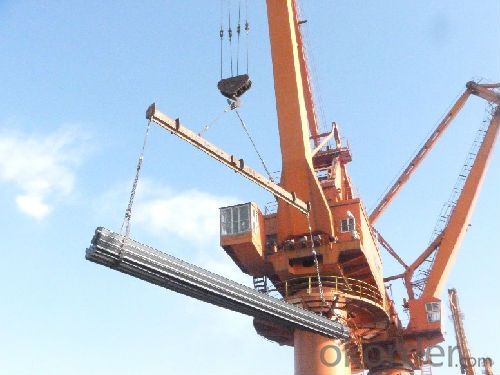

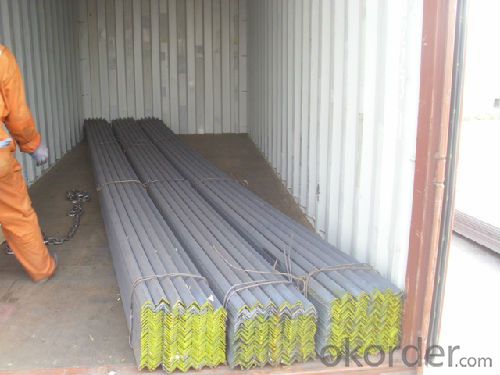
- Q: How do steel angles perform in terms of thermal conductivity?
- Steel angles have relatively low thermal conductivity compared to other materials, meaning that they do not easily conduct heat. This property makes steel angles less prone to thermal expansion or contraction, making them suitable for various applications where temperature fluctuations are a concern.
- Q: Can steel angles be welded together?
- Yes, steel angles can be welded together.
- Q: Can steel angles be welded or joined together?
- Yes, steel angles can be welded or joined together. Welding is a commonly used method to connect steel angles, as it provides a strong and durable bond. The process involves melting the edges of the angles and then fusing them together using a welding electrode. Welding not only creates a secure connection between the steel angles but also ensures structural integrity. It is important to follow proper welding procedures and techniques to ensure the quality and strength of the joint. Additionally, steel angles can also be joined together using other methods such as bolting or riveting, depending on the specific application and requirements.
- Q: Are there any limitations or restrictions on the use of steel angles in certain applications?
- Yes, there are limitations and restrictions on the use of steel angles in certain applications. These restrictions mainly depend on the specific engineering requirements, load bearing capacity, and structural stability needed for the application. Additionally, factors such as the type of project, environmental conditions, and building codes and regulations may also impose limitations on the use of steel angles. It is important to consult with a structural engineer or an industry professional to ensure proper selection and usage of steel angles for specific applications.
- Q: Can steel angles be used to create decorative elements in architecture?
- Yes, steel angles can definitely be used to create decorative elements in architecture. Steel angles, also known as angle irons, are versatile and can be easily manipulated to create various shapes and designs. They can be cut, bent, and welded to form intricate patterns, ornamental details, and decorative accents. Steel angles can be used in various architectural applications, such as railings, balusters, window grilles, door frames, brackets, and ornamental trims. Their strength and durability make them suitable for both indoor and outdoor use. They can be finished with different coatings, such as paint or powder coating, to enhance their appearance and protect them from corrosion. Architects and designers often incorporate steel angles in modern and contemporary designs to add an industrial, sleek, and minimalist touch. The clean lines and geometric shapes of steel angles can provide a modern aesthetic to buildings and structures. They can be used to create unique and eye-catching patterns, adding visual interest and a sense of style to architectural projects. Moreover, steel angles can also be combined with other materials, such as glass, wood, or stone, to create a striking contrast and achieve a harmonious blend of materials. This versatility allows for endless design possibilities, enabling architects to create truly customized and distinctive decorative elements. In conclusion, steel angles can be effectively used to create decorative elements in architecture. Their versatility, strength, and potential for customization make them an ideal choice for architects and designers looking to add aesthetic appeal and uniqueness to their projects.
- Q: Are steel angles suitable for load-bearing walls?
- Load-bearing walls can indeed be made suitable with the use of steel angles. In construction, steel angles are widely utilized due to their structural strength and stability. Their purpose is to shoulder hefty loads and offer support to the walls. When it comes to doors and windows, steel angles are often employed as lintels to transfer the weight from above to the neighboring walls. Moreover, they can serve as vertical supports within walls to bear the burden of floors and roofs. Nevertheless, it is crucial to seek guidance from a structural engineer or a professional builder to determine the appropriate size and placement of steel angles for load-bearing walls. This is because the specific requirements may vary depending on the building's design and load conditions.
- Q: Are steel angles available in non-standard sizes or custom shapes?
- Yes, steel angles are available in non-standard sizes or custom shapes. While standard sizes of steel angles are commonly found in the market, there are manufacturers and suppliers who offer the flexibility to produce angles in non-standard sizes or custom shapes. This allows customers to meet their specific project requirements, whether it be for structural, architectural, or other applications. Custom shapes can include unequal leg lengths, curved angles, or angles with specific hole patterns. These non-standard sizes or custom shapes may require special manufacturing processes, additional lead time, and possibly higher costs compared to standard sizes. However, the availability of steel angles in non-standard sizes or custom shapes provides customers with the versatility to address unique design needs and achieve desired outcomes.
- Q: How are steel angles supported during installation?
- Steel angles are typically supported during installation by using various techniques and materials. One common method is to use steel brackets or supports that are designed to hold the angles in place. These brackets are often attached to the structure using bolts or screws and provide stability and structural integrity to the angles. Another method of support is to weld the steel angles directly to the structure. This involves using a welding process to fuse the angles to the existing steel framework, ensuring a strong and secure connection. Welding is often preferred in situations where the angles need to bear heavy loads or where additional strength is required. In some cases, steel angles may also be supported using concrete or masonry. This involves embedding the angles into the concrete or masonry structure, providing a solid and stable foundation for the installation. This method is commonly used in construction projects where the angles need to be securely fixed to the building or where additional reinforcement is required. Overall, the specific method of supporting steel angles during installation will depend on the requirements of the project, the load-bearing capacity needed, and the design specifications. It is important to follow the appropriate industry standards and guidelines to ensure a safe and successful installation.
- Q: Can steel angles be used in decorative or architectural applications?
- Yes, steel angles can be used in decorative or architectural applications. They provide structural support while also adding a modern and industrial aesthetic to the design. Steel angles can be used to create features like exposed beams, decorative trims, and ornamental structures, making them versatile for various architectural and decorative purposes.
- Q: Can steel angles be used for equipment racks or shelving?
- Equipment racks or shelving can indeed utilize steel angles. The robustness, endurance, and adaptability of steel angles make them widely employed in construction and fabrication. These angles offer structural reinforcement and steadiness, rendering them perfect for crafting resilient equipment racks or shelving units. By welding or bolting steel angles together, a sturdy framework can be created to hold an assortment of items, including weighty machinery, tools, or storage containers. Moreover, the flexible design of steel angles permits effortless customization and adjustment of shelf heights, making them suitable for accommodating diverse sizes and types of objects. In conclusion, steel angles are a dependable choice for constructing equipment racks or shelving systems that necessitate strength, stability, and longevity.
Send your message to us
Hot Rolled Carbon Equal and Unequal Steel Angle
- Loading Port:
- China Main Port
- Payment Terms:
- TT or LC
- Min Order Qty:
- 100 m.t.
- Supply Capability:
- 5000MT m.t./month
OKorder Service Pledge
OKorder Financial Service
Similar products
Hot products
Hot Searches
Related keywords
